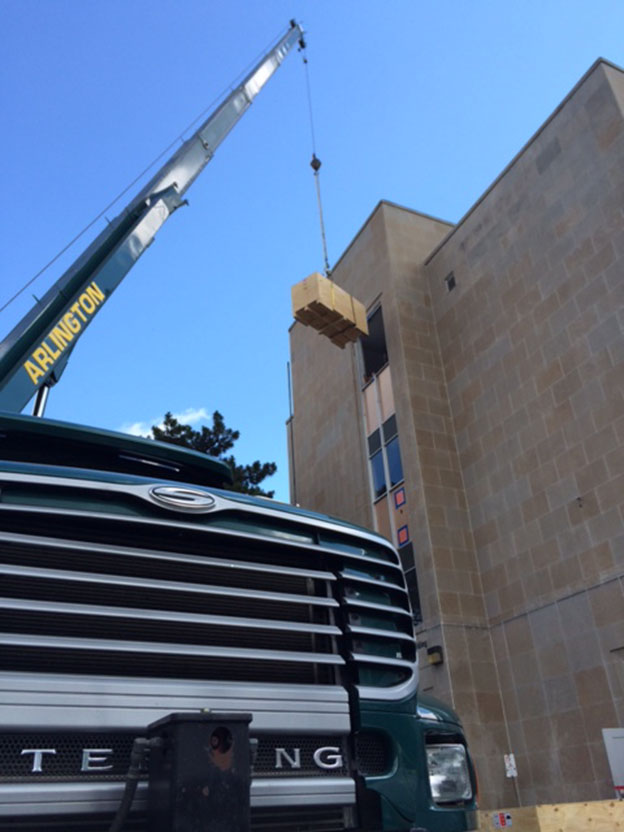Special delivery

Workers use a crane to get a high-tech x-ray fluorescence machine into its new home last week. The CFI-funded machine will allow researchers to perform analyses of core samples at a much faster rate than had been previously possible.
A high-tech piece of machinery in Hamilton may help researchers understand why a young girl fell to her death in a Mexican cave some 13,000 years ago.
The x-ray fluorescence machine, recently installed in Ed Reinhardt’s lab, analyzes more core samples at a much faster rate – and a much higher resolution – than was previously possible.
Among other things, that means Reinhardt will be able to move even faster toward solving the mystery of a young girl named Naia.
The professor of geography and earth sciences was part of an international team that made headlines earlier this year when it found the girl’s fully intact skeleton at the bottom of an underwater cave in Mexico’s Yucatan Peninsula.
The team believes the girl met her fate when she ventured into the elaborate cave system, which was dry at that time in human history, and fell approximately 160 feet into a subterranean pit.
“We don’t know for sure, but she probably entered the cave willingly, likely with a torch, in search of groundwater,” said Reinhardt, who was the only Canadian scientist to dive within the cave system.
The new equipment, funded by the Canada Foundation for Innovation, will help Reinhardt’s team analyze samples that could provide clues as to why Naia entered the cave.
It will also allow them to perform sophisticated environmental analyses to study things like climate change.
The XRF machine arrived on campus from Sweden at the end of July and will analyze its first core samples in the coming weeks.

